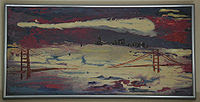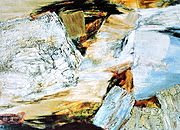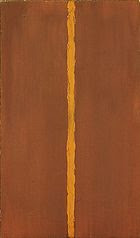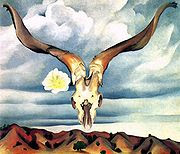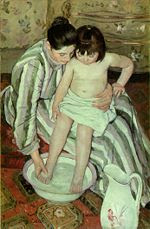As in any well-formulated advertising campaign, political candidates use the media to increase their exposure to the public. In the modern campaign, extensive use of radio and television have supplanted direct appearances on the campaign trail. The most commonly used broadcast technique is the television spot advertisement. Spot ads, which may last from 15 to 60 seconds, emphasize issues and personal qualities that appear important in the poll data. These ads attempt to establish candidate name identification, create a favorable image of the candidate and a negative image of the opponent, link the candidate with desirable groups in the community, and communicate the candidate's stands on selected issues. Spot ads often make use of “sound bites,” short, punchy statements from the candidate designed for voters to remember. Spot ads also may have a negative slant, seeking mainly to criticize the opponent. Well-known examples of successful negative ads include the 1988 “Willie Horton” ad of George Bush, accusing Bush's opponent, Michael Dukakis, of coddling criminals, and the 1964 ad of Lyndon Johnson that suggested his opponent, Barry Goldwater, would lead the United States into nuclear war. Candidates sometimes use staggering numbers of spot ads in the course of a campaign. During a single week in the 1996 Republican Party primary season, for example, candidate Steve Forbes televised 526 commercials in Iowa and 639 in New Hampshire.
Advertising photography
Designed to sell products or services by capturing a viewer’s attention. It can be found in magazines, newspapers, and catalogs. The photographs may stand alone, or they may be combined with words to sell a product or illustrate a concept. Typically, an art director or advertising agency determines the content of the picture and hires a photographer to create the image. The image may be a still life of a company’s product, or the photograph may try to elicit an emotion the advertiser wishes to associate with a product. Male and female models are often used to create moods, especially in fashion photography. The photographer visually translates the idea into the final image using a variety of tools and techniques. He or she charges a daily rate for taking photographs, plus expenses, including the cost of hiring freelance assistants, stylists, and makeup artists when necessary. Some of the technical elements a photographer must skillfully control include sharpness, exposure, lighting, composition, and color reproduction.
Advertising Production
Art directors and copywriters create the concepts behind the ads, but they do not literally make the advertising. Making the ads is the job of the production department. In print advertising, the art director works with the print production manager to hire a photographer or illustrator and then supervises the work. Once the photograph has been taken or the illustration completed, the image is scanned into a computer and placed in the proper position. The art director also selects typefaces for the headline and body copy and then, using the computer, correctly positions the headline and body copy. Once all the elements are in place, the computer file is sent to the newspaper or magazine in which the ad will run. The publication then prints the ad directly from the computer file.
Direct Advertising
Direct Advertising, presenting information about a product or business directly to consumers. This includes catalog sales and other solicitation for mail or telephone orders, distributing information about local businesses through the mail, and other direct presentation or delivery of advertising to potential customers.
Cooperative Advertising
Cooperative advertising is an arrangement between manufacturers and retailers in which manufacturers offer credits to their retail customers for advertising. The credits, or advertising allowances, are based on the amount of product the retailer purchases. For example, if the retailer purchases $100,000 worth of a product from a manufacturer, the manufacturer’s cooperative advertising program may allot a 1 percent credit, or $1,000, toward the cost of purchasing an ad that will feature the product. In addition, some manufacturers will match the amount that the retailer spends, sharing the cost of the ad. In the United States antitrust laws enforced by the Federal Trade Commission (FTC) ensure that these ad allowances are offered on equal and proportionate terms so that large retailers are not unduly favored over small retailers. Cooperative advertising is a form of local advertising because it directs consumers to local retail outlets.
Trade Advertising
Advertising can be divided into two broad categories—consumer advertising and trade advertising. Consumer advertising is directed at the public. Trade advertising is directed at wholesalers or distributors who resell to the public. This article focuses on consumer advertising, the form of advertising that is familiar to most people.
Public Service Advertising
Most advertising is designed to promote the sale of a particular product or service. Some advertisements, however, are intended to promote an idea or influence behavior, such as encouraging people not to use illegal drugs or smoke cigarettes. These ads are often called public service ads (PSAs). Some ads promote an institution, such as the Red Cross or the United States Army, and are known as institutional advertising. Their purpose is to encourage people to volunteer or donate money or services or simply to improve the image of the institution doing the advertising. Advertising is also used to promote political parties and candidates for political office. Political advertising has become a key component of electoral campaigns in many countries.
Outdoors Advertising
Outdoor advertising amounted to 0.8 percent, or $1.7 billion, of total ad spending in the United States in 1999. Outdoor advertising is an effective way to reach a highly mobile audience that spends a lot of time on the road—for example, in commuting to and from work or as part of their job. It offers the lowest cost per exposure of any major advertising medium, and it produces a major impact, because it is big, colorful, and hard to ignore. The messages on outdoor boards have to be very brief. So outdoor advertising primarily serves as a reminder medium and one that can trigger an impulse buy.
Institutional Advertising
Institutional advertising seeks to create a favorable impression of a business or institution without trying to sell a specific product. This type of advertising is designed solely to build prestige and public respect. For nonprofit institutions, such advertising helps support the institution’s activities—for example, by encouraging blood donations or cash contributions for the work of an organization like the Red Cross. A for-profit business has other reasons for improving its reputation rather than trying to sell a particular product. In some cases a large company may sell a diversity of products. As a result, there is more value and greater efficiency in building a brand image for the company itself. If consumers learn to have a high regard for the company, then they are more likely to have a favorable opinion of all of the company’s diverse products.
Informational Advertising
Informational advertising seeks to promote an idea or influence behavior. Sometimes known as public service advertising, it may try to discourage young people from using illicit drugs or tobacco, or it may encourage people to adopt safer, healthier lifestyles.
Cigarette Advertising
Television has received much criticism due to the significant amount of advertising used during regular programming, especially with regard to addictive substances such as cigarettes and alcohol. Special interest groups along with the Federal Communications Commission (the federal broadcasting agency) have attempted to regulate such advertising. Today, cigarette commercials can no longer be aired on television, although printed materials, such as newspapers and magazines, continue to advertise them. This 1956 magazine ad typifies the attempts by cigarette manufacturers to glamorize smoking.
